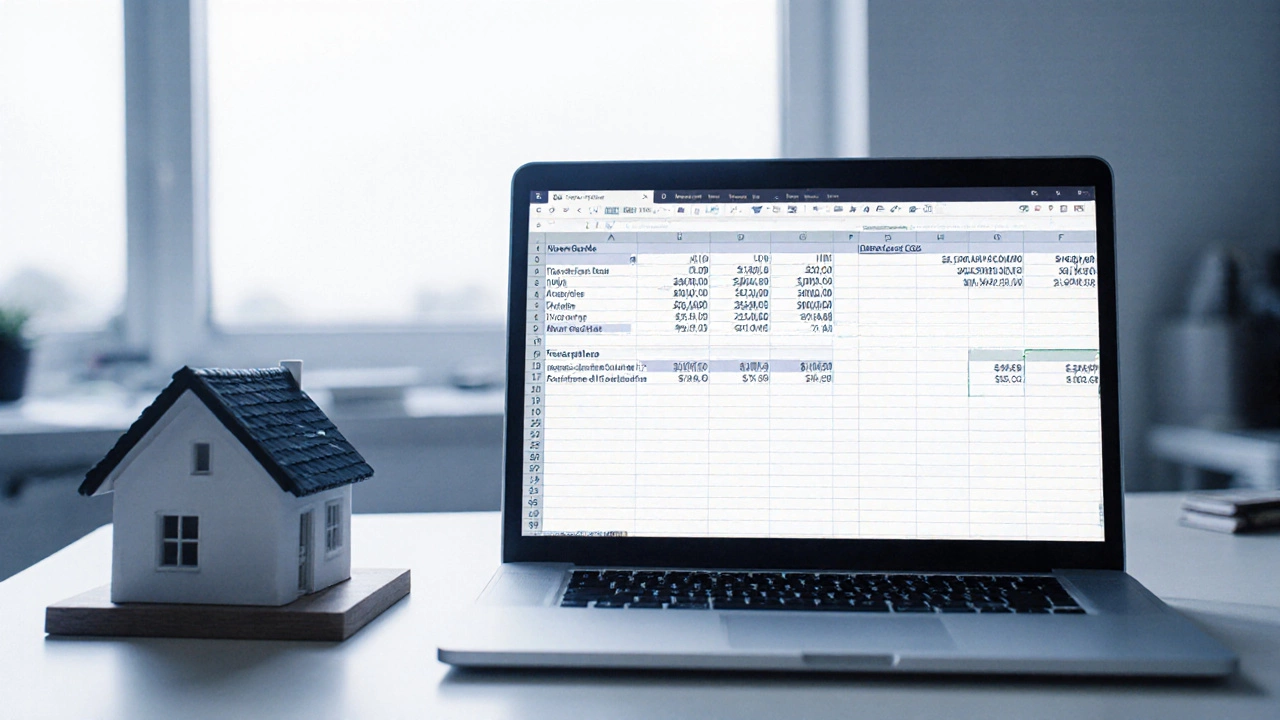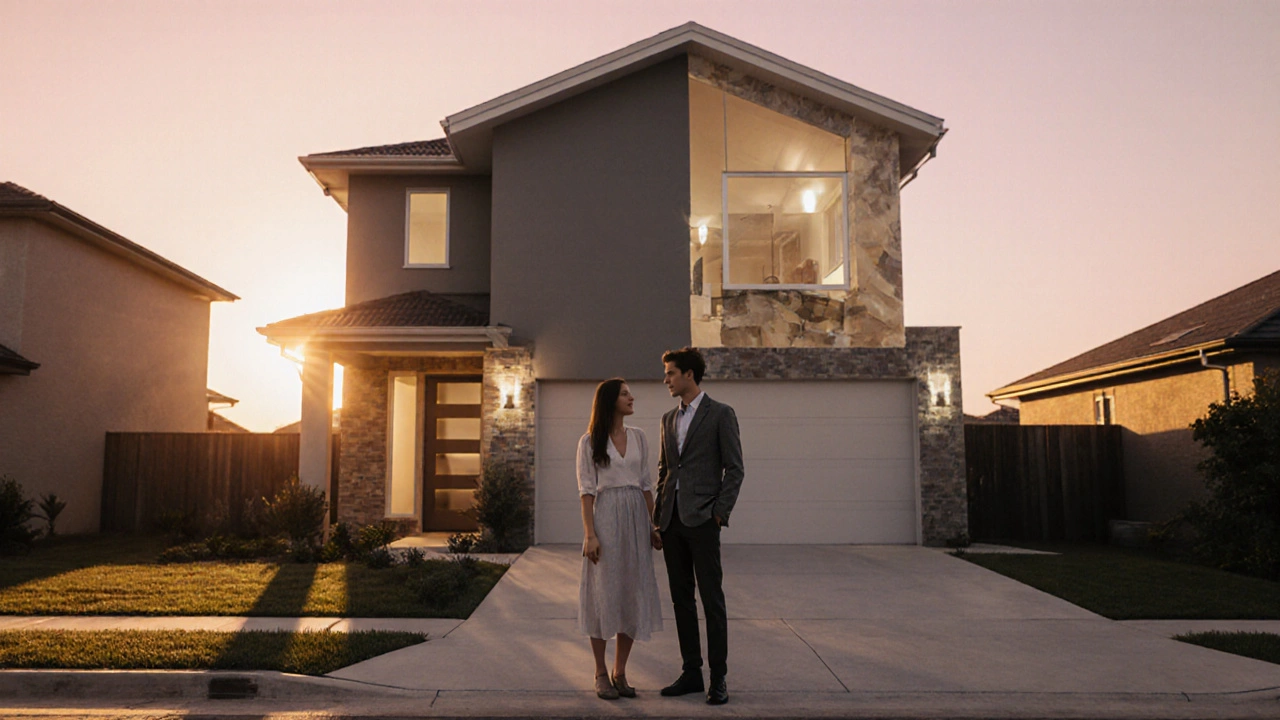Shared Ownership Share Calculator
Calculate Your Shared Ownership Share Price
Enter the basic property details to calculate your share value using three different methods.
Estimated Share Price
NZ$0
Present Value of Share
NZ$0
Average Price Per Percent
NZ$0
Estimated Share Price
NZ$0
Figuring out how much to pay for a slice of a home can feel like solving a puzzle with missing pieces. In shared‑ownership schemes you’re not buying a whole house; you’re buying a percentage - usually anywhere from 25% to 75% - and renting the rest. That mix of buying and renting brings a unique set of numbers to crunch. Below you’ll find a step‑by‑step walk‑through of the most common ways to price those shares, the data you need, and the pitfalls to dodge.
What is Shared Ownership?
Shared ownership is a hybrid home‑purchase model that lets buyers purchase a portion of a property while paying rent on the remaining share, typically managed by a housing association or government‑backed programme. It was introduced in the UK in the early 2000s and has since been adapted in New Zealand, Australia and Canada to boost housing affordability. Buyers own their equity share outright and can increase that share over time - a process called "staircasing" - until they eventually own the whole property.
The Core Entities You’ll Need to Value
Pricing a shared‑ownership share hinges on a handful of key entities. Each one brings its own data set and influences the final figure.
- Property valuation refers to the professional estimate of a property's market value, often expressed as a full‑market price. In New Zealand the valuation is usually carried out by a licensed valuer registered with the Valuers Registration Board.
- Equity share is the percentage of the property you actually own. If you buy a 40% share, you own 40% of the market value and pay rent on the remaining 60%.
- Mortgage is the loan you take to fund your equity share. Lenders assess risk based on the loan‑to‑value (LTV) ratio of the share, not the whole property.
- Service charge covers the cost of building maintenance, insurance and communal services that the housing association passes on to all occupants.
- Leasehold defines the legal framework where you own the share but the land itself is owned by the housing association. Lease terms can affect resale value.
- Market price is the price a buyer would pay for the entire property on the open market. It is the benchmark for calculating the cost of any share.
- RICS (Royal Institution of Chartered Surveyors) provides valuation standards that many lenders and housing associations follow to ensure consistency.
- Housing New Zealand (now part of Kāinga Ora) oversees many shared‑ownership programmes in NZ, setting eligibility rules and price caps.
Method #1 - Market‑Value Proportion
The simplest and most common approach is to take the full‑market price of the home and apply the percentage you plan to buy.
- Obtain an up‑to‑date property valuation from a licensed valuer.
- Confirm the market price - the valuer’s estimate for a 100% sale.
- Multiply the market price by your desired equity share (e.g., 40%).
- Result is the purchase price for the share.
Example: A house is valued at NZ$600,000. You want a 35% share. Purchase price = 600,000 × 0.35 = NZ$210,000.
This method is transparent and easy to explain to lenders, but it assumes the market price reflects the same value for a partial share - which isn’t always true because smaller shares can be slightly less attractive to future buyers.
Method #2 - Discounted Cash‑Flow (DCF) on the Share
For buyers who want a more investment‑oriented view, a DCF model projects the cash flows you’ll receive (or pay) over the ownership period and discounts them back to present value.
- Identify expected rent on the remainder share (often set at a percentage of market rent, e.g., 75%).
- Estimate annual service charge and any lease‑hold fees.
- Project how long you intend to hold the share (5‑10 years is typical).
- Choose a discount rate - many use their mortgage rate plus a risk premium (about 6‑8% in NZ currently).
- Calculate Net Present Value (NPV) of rental outflows plus purchase price. If NPV equals or is lower than the market‑value proportion price, the share is fairly priced.
While more complex, DCF captures the true cost of rent and service charges, giving a clearer picture of long‑term affordability.

Method #3 - Comparable Share Sales (Comps)
Look for recent transactions of similar shared‑ownership homes in the same neighbourhood. This market‑based approach mirrors how full‑market valuations are derived.
- Gather data on at least three comparable sales where the equity share and total market price are known.
- Calculate the price per percent of equity for each sale (purchase price ÷ share %).
- Average the results to get a benchmark price‑per‑percent.
- Multiply the benchmark by your intended share %.
Example: Recent sales in your suburb show the following price‑per‑percent figures: NZ$2,850, NZ$3,100, NZ$2,950. Average = NZ$2,967. For a 30% share, price ≈ NZ$2,967 × 30 = NZ$89,010.
This method reflects real market sentiment for partial ownership but requires access to reliable comp data - something agents or housing associations often provide.
Choosing the Right Method for You
Each of the three methods shines in different situations:
- Market‑Value Proportion works best when the property is newly built or has a fresh, independent valuation.
- DCF is ideal for investors who plan to hold the share long enough for rent to make a material impact on affordability.
- Comps are most reliable in mature neighbourhoods with active shared‑ownership markets.
In practice, most buyers run the market‑value proportion first, then sanity‑check with either DCF or comps to spot anomalies.
Step‑by‑Step Checklist Before You Sign
- Secure a recent valuation report from a RICS‑approved valuer.
- Ask the housing association for the exact rent‑on‑share percentage they use.
- Calculate the total purchase price using Method #1.
- Run a quick DCF spreadsheet with your mortgage rate and projected rent to see if the cash‑flow feels sustainable.
- Request at least three comparable share sales from the association or a local agent.
- Confirm the service charge and any lease‑hold ground rent - these can add 1‑2% of market price per year.
- Check eligibility rules with Kāinga Ora (formerly Housing New Zealand) - income caps, first‑time‑buyer status, etc.
- Discuss with your mortgage broker the LTV ratio for a partial share - many lenders cap at 90% of the share price.
Following this checklist helps you avoid paying more than the share is worth and keeps the numbers transparent for your lender.
Comparison Table: Pricing Methods at a Glance
| Criteria | Market‑Value Proportion | Discounted Cash‑Flow | Comparable Share Sales |
|---|---|---|---|
| Data needed | Full valuation only | Rent estimate, service charge, mortgage rate, holding period | 3+ recent share‑sale transactions |
| Complexity | Low | Medium‑High (requires spreadsheet) | Medium (needs market research) |
| Best for | New builds, clear valuations | Long‑term investors, cash‑flow focus | Mature suburbs, active shared‑ownership market |
| Typical error range | ±5% | ±3% (depends on discount rate accuracy) | ±4% |

Common Pitfalls and How to Avoid Them
- Over‑relying on a single valuation - get a second opinion if the share price seems high.
- Ignoring future rent escalations - many schemes increase rent annually by CPI; factor this into DCF.
- Underestimating service charges - they can jump after major building upgrades.
- Assuming you can stair‑case at any time - some associations limit stair‑casing to specific windows (e.g., every 2 years).
- Not checking lease length - a short lease can depress resale value and make mortgage refinancing tough.
Real‑World Example: Auckland’s West‑Coast Shared‑Ownership Development
In 2023 a housing association launched a 100‑unit project in West Auckland priced at a full market value of NZ$750,000 per unit. A buyer, Maya, wanted a 40% share.
- Valuer gave a market price of NZ$760,000 (5% premium for location).
- Method #1 gave a share price of NZ$304,000.
- Rent on the remaining 60% was set at 75% of market rent - approx NZ$18,000 per year.
- Using a 6% discount rate, Maya’s 5‑year DCF gave a present value of NZ$297,000 - close enough to the market‑value figure.
- She also found three comparable sales where the price‑per‑percent ranged from NZ$2,850 to NZ$3,050. The average yielded NZ$306,000, confirming the price.
Maya proceeded, secured a mortgage for 85% of the share price (NZ$258,400) and signed a 99‑year lease‑hold. Six months later she stair‑cased to 50% when her income rose, paying an additional NZ$115,000. This scenario shows how the three methods converge when data are solid.
Next Steps: From Pricing to Purchase
Once you’ve landed on a price you’re comfortable with, the remaining steps are mostly procedural:
- Submit an application to the housing association - include proof of income, savings, and eligibility.
- Arrange a mortgage - provide the share price, valuation report, and the association’s rent‑on‑share schedule.
- Review the lease‑hold agreement - note any ground rent, service charge escalation clauses, and stair‑casing rules.
- Conduct a final inspection - check for any defects that could affect valuation.
- Sign the sale and lease documents - the association will register your equity share with Land Information New Zealand (LINZ).
Throughout, keep a spreadsheet of all costs (purchase price, mortgage payments, rent, service charges) to monitor affordability over time.
Frequently Asked Questions
How is the rent on the unsold share calculated?
Most schemes set rent at a fixed percentage (usually 70‑80%) of the market rent for the whole property. The exact figure is published in the shared‑ownership agreement and is adjusted annually for CPI.
Can I buy a larger share later?
Yes - the process is called stair‑casing. You can usually increase your share in increments of 10% or 25% whenever the association’s policy allows, often every 12‑24 months. Each additional step requires a new valuation and mortgage approval for the extra amount.
What happens if I want to sell my share?
You can sell your equity share back to the housing association or on the open market. The selling price is usually based on the current market valuation multiplied by your share percentage, plus any lease‑hold fees. Some associations have a right of first refusal.
Do I need a solicitor for a shared‑ownership purchase?
While not legally required, a solicitor experienced in lease‑hold and shared‑ownership transactions can review the lease, ensure the service charge schedule is clear, and protect you from hidden clauses.
Is shared‑ownership cheaper than renting outright?
It can be, especially if you can secure a low‑interest mortgage on your share. However, you must add rent on the remaining share and service charges. A quick cash‑flow comparison (mortgage payment vs. full rent) will reveal the true cost.


Corbin Fairweather
I am an expert in real estate focusing on property sales and rentals. I enjoy writing about the latest trends in the real estate market and sharing insights on how to make successful property investments. My passion lies in helping clients find their dream homes and navigating the complexities of real estate transactions. In my free time, I enjoy hiking and capturing the beauty of landscapes through photography.
view all postsWrite a comment